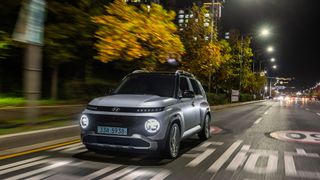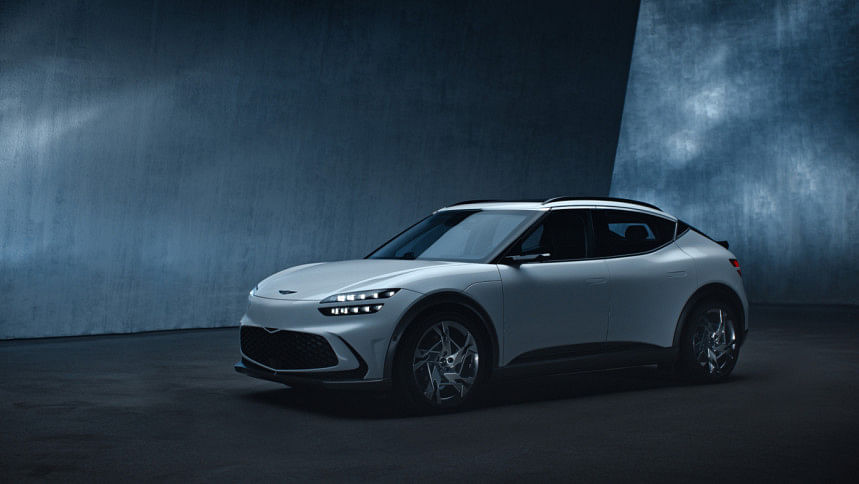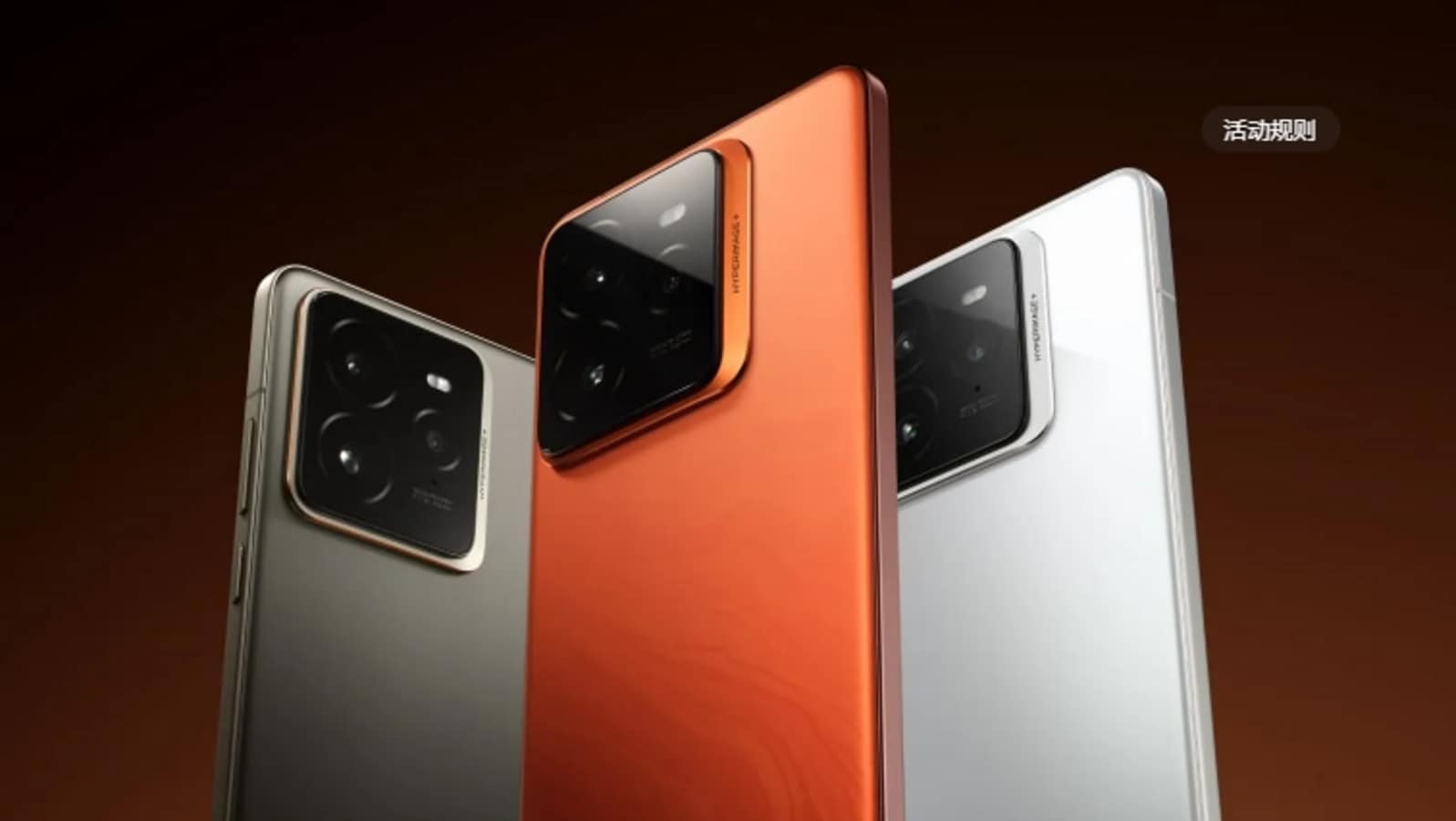
Visit Seoul and you quickly lose count of the number of Hyundai Caspers you see nipping in and out of the dense traffic. Sharing its namesake with the friendly ghost, this diminutive city car has proven a smash hit on home turf thanks to its surprising practicality, clever use of interior space and parking space-friendly size. Hyundai has decided to ditch the paranormal naming for the electric version of Casper that it plans to sell in Europe, the Middle East and Asia Pacific, opting instead for a more Gen Z-friendly Inster moniker.
The resulting car, which I took for a spin recently, is only marginally larger than the petrol-powered Casper, measuring just 3,825mm long and 1,575mm tall. Perhaps more importantly, it's also just 1,600mm wide – an incredibly slim machine. There are two battery options, 42kWh or a longer range 49kWh, which deliver power to a single motor.
This is tuned to produce either 71.1kW (97hp) and 85.5kW (115hp) respectively.
It’s no pocket rocket, taking 10.6 seconds to hit 62mph from a standstill in the fastest versions. But we are missing the point slightly here, because this is a vehicle with an even similar footprint than the recently driven , the Fiat 500e and the hotly-anticipated Dacia Spring.
It's also one that essentially transforms into a small commercial vehicle thanks to some clever folding seats and a great use of interior space. In South Korea, the cheeky little Casper not only transports families around town, it also doubles up as a shopping trolley, removals van and horticultural delivery truck whenever the need arises. It has the can-do attitude that harks back to the days of the original Fiat Panda and even Renault’s first-gen 4 and 5 – small, affordable cars that don’t mind getting stuck in.
And that's why it is worth paying attention to...
Almost on the money Let’s address the elephant in the room before we get stuck into how excellent the little Inster is. In the UK, it will start at £23,495 and rise to £26,745 for the more lavishly appointed models. There are no plans for it to go on sale in North America just yet (although there have been recent spy shots of it testing there), but those figures are around $30,400 / AU$46,000 and $35,000 / AU$52,600 respectively.
It’s still an affordable car in the UK and Europe, but it isn’t the ridiculously reasonable car that the South Koreans are treated to. The price over there is around £18,000 /$24,000 / AU$35,500 without any tax incentives and government rebates, dropping to just £11,000 / $14,000 / AU$22,000 when you throw in some discounts. At that sort of money, I’d probably buy two, but the cost of shipping and import duties means the Inster is priced in a way that it competes with the more spacious and better built Renault 5 E-tech.
It is also a healthy chunk more expensive than the equally utilitarian Dacia Spring, which is difficult to spec up to more than £16,000 (or around $21,000 / AU$31,500). It’s worth tackling the price first, simply because Inster needs to be viewed (and reviewed) as the vehicle that was designed for South Korea – an exceptionally affordable and eminently practical electric vehicle for the masses. Space exploration The Inster’s main party trick is the sheer amount of space it manages to cram inside its compact exterior proportions.
All four wheels are pushed to the extreme corners, freeing up every inch of space for people or cargo. What’s more, the boxy silhouette and high roof line means four adults can comfortably sit inside, without the need to stoop or have knees bashing on the seats in front. This is aided by four individual seats that slide and fold freely.
With all four seats in their normal positions, you’d be lucky to fit any more than a couple of backpacks in the boot or trunk, but the rear seats can slide forward slightly (individually) to accommodate the space you need. Plus, the back seats fold completely flat and include clever – but very basic – covers on the rear that ensure the load space is completely flat and there are no gaps between the seats for objects to fall between. If you need even more space, the front passenger seat folds flat, opening up enough room for a small surfboard.
Even the driver’s seat folds down for a spot of – or the South Korean craze for sleeping and camping in cars that are way too small for that stuff. It’s a magnificent example of excellent packaging and surprisingly comfortable to drive and cruise around in for extended periods of time. The one major issue is the car’s narrow footprint, which means drivers and passengers can butt shoulders up against the door pillars, particularly if you're of the Dwayne Johnson build.
Specs appeal Hyundai has thrown every conceivable piece of tech at this car, which makes it even more alluring given its affordable price in its domestic market. There’s a 10.25 digital instrument cluster and a 10.
25-inch touchscreen infotainment display. That digital cluster can be personalized with a number of neat, graphical clock set-ups, while the infotainment system, borrowed from the wider Hyundai Motor Group, features all of the modern connected features customers demand. Mapping, apps, CarPlay and Android Auto are also part and parcel, although these are of the wired variety, despite there being a wireless charging pad.
Customers can option heated seats, a heated steering wheel and dazzling LED projection headlamps, while the Advanced Driver Assistance System (ADAS) list is longer than most Tolstoy musings. Parking collision avoidance, a surround view parking camera and the latest Highway Driving Assist 1.5, which automatically lane-keeps and adjusts speed to match local enforced limits, all come as standard on the car.
There’s even 64-color LED ambient lighting inside (adjustable, of course) and vehicle-to-load (V2L) functionality that allows charging or operating of 110V/220V devices without bulky adaptors. devotees will be able to enjoy their cup of tea in the morning. More than a city-slicker Maximum electric range in the smaller battery version is 327km (203 miles), extending to 370km (230 miles) in the longer range variant.
The Inster can charge at a max speed of 120kW, meaning it will take around 30 minutes to achieve an industry standard 10-80 per cent charge from faster public outlets. That’s certainly not the most impressive speed, but thanks to excellent efficiency and accurate range read-outs, it’s not impossible to embark on lengthier road trips in the little trip machine. Hyundai has also attempted to elevate the highway experience over the more basic Casper model with increased soundproofing throughout, upgraded shock absorbers and the use of a hydro bushing for the electric motor mount to decrease vibration and harshness.
Overall refinement is pretty good for such a small car, but it’s still not something I’d want to spend hours on the highway in. The official max speed in the Long Range model is 93mph, but it feels like it’s working hard at 70-75mph, Europe’s typical speed limits. This also begs the question, why ply Inster with every driver assistance system, including intelligent cruise control, when it’s highly unlikely to spend a lot of time on the highway? But without wanting to sound like a broken record here, the real issue is the price.
Put simply, the Dacia Spring will offer much of the same (plus more room inside) for less money, while the similarly expensive Renault 5 E-tech is the more comfortable and premium-feeling car for most people. Still, it’s difficult not to harbor a soft spot for Inster. It’s too cute and a little bit silly, yet practical and very serious in its tech offering.
Plus, it transforms into a double bed, should that be on your list of EV ‘must-haves’..












